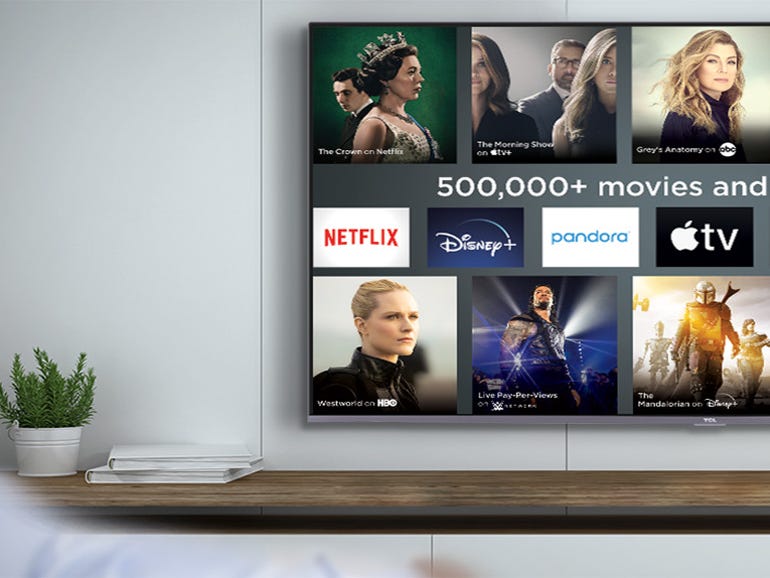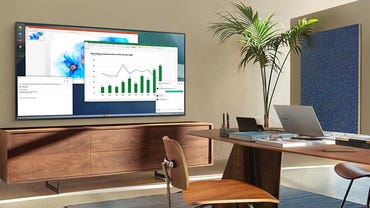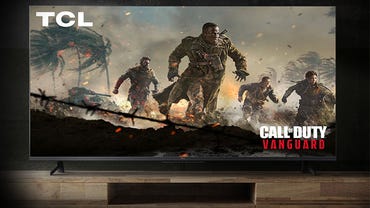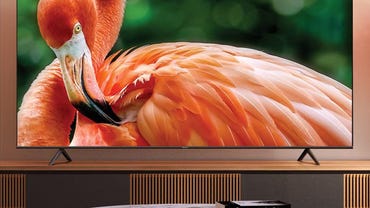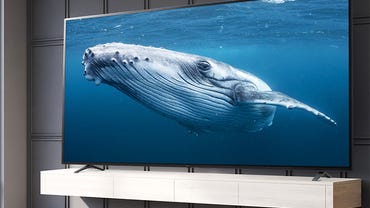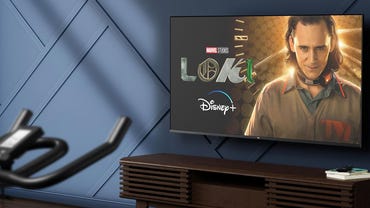Buying a budget TV doesn’t mean you have to sacrifice sound or picture quality or cool features like Bluetooth connectivity and voice controls. While TCL and Hisense are best known for their budget-friendly models, brands like Samsung and LG also have cheaper options available for anyone who prefers those brands over others.
While you won’t be able to find an OLED TV for less than $1,000, you can still get great picture quality by choosing a model that offers either Dolby Vision or HDR10 support and a good refresh rate for smoother action. If sound quality is your priority, you can find affordable options that support Dolby Digital Plus audio processing or Bluetooth connectivity for setting up wireless soundbars and speakers to create a custom home theater. I’ve rounded up a small list of the best budget TVs available and broken down their features to help you find the best fit for your home and finances.
Also: Best TV 2022: Budget-friendly to big-screen opulence
Best overall
Screen size: 55-inches | Resolution: 4K | HDR: HDR | Panel type: LED | Refresh rate: 60Hz
The 55-inch Samsung AU8000 is a well-rounded TV that’s a great first screen for your home theater or a budget-friendly option as a secondary TV in your bedroom or kids’ playroom. It has Bixby and Alexa built-in for hands-free voice controls, and you can connect it to your Hey Google account for more ways to command your TV. It has 4 HDMI ports for connecting your game consoles and playback devices, and the Tizen operating system gives you access to a suite of preloaded apps, including Netflix, Disney+, and YouTube, so you can start watching your favorite shows, movies, and videos right away. And you can download others through the intuitive app store.
The AU8000 works with Samsung’s Q Symphony technology to have the integrated TV speakers work in tandem with compatible soundbars for more immersive audio. And if you work from home, you’ll love the remote PC access feature that lets you use the TV as a wireless monitor for your laptop or desktop so that you can work on your couch.
Pros:
- Voice controls
- Preloaded apps
- Plenty of connections
Cons:
- No Dolby support
- Somewhat disappointing refresh rate
Best 55-inch
Screen size: 55-inch | Resolution: 4K | HDR: Dolby Vision, HDR10 | Panel type: QLED | Refresh rate: 60Hz
TCL is the king of affordable TVs, and the 55-inch 5 Series is one of the best in its size class. It supports Dolby Vision and HDR10 for incredible detailing and enhanced 4K resolution, so everything from old Hollywood classics to the latest blockbuster films looks amazing. The Roku platform gives you access to hundreds of streaming apps and keeps your most-used ones and connected devices in a single, simplified hub menu. This means you won’t have to navigate any confusing menus or memorize HDMI input locations in order to play games or watch a quick YouTube video.
While it doesn’t have a voice-enabled remote, you can connect your smart speaker to use Alexa or Hey Google, and you can download the Roku app to your smartphone or tablet to turn it into a voice-enabled remote. The stand feet also have integrated cable management clips and channels to help keep your home theater looking neat and organized.
Pros:
- Dolby Vision
- Integrated cable management
- Roku platform is great for cord-cutters
Cons:
- No native voice controls
- No Dolby Atmos support
Best 65-inch
Screen size: 65-inches | Resolution: 4K | HDR: Dolby Vision, HDR10+ | Panel type: QLED | Refresh rate: 60Hz
Hisense is another great brand known for its budget-friendly TVs, and if you want a larger screen, their 65-inch 65U6G model is a great option. It uses a QLED panel with Dolby Vision and HDR10+ support and a peak brightness of up to 600 nits for incredible picture quality that you can appreciate in almost any lighting environment.
The voice-enabled remote works with both Alexa and Hey Google for hands-free controls, and with Chromecast built-in, you can share videos, photos, and music from your mobile devices for more ways to entertain yourself, family, and friends. The integrated speakers work with Dolby Atmos audio processing technology for virtual, 3D surround sound without the need to set up extra equipment, and the auto low latency mode gives you a lag-free gaming experience.
Pros:
- Dolby Vision and Dolby Atmos support
- Voice controls
- Chromecast built-in
Cons:
Best under $500
Screen size: 55-inch | Resolution: 4K | HDR: HDR10 | Panel type: LED | Refresh rate: 60Hz
If you want to spend less than $500 and still get a great TV, the 55-inch LG 80 Series is a great option. It’s built with a quad-core processor and LG’s Thinq AI programming to provide smooth-yet-crisp native and upscaled 4K resolution. The voice-enabled remote works with Alexa, Hey Google, and Siri for hands-free controls.
If home audio is a priority for you, the 80 Series is able to connect to 2 Bluetooth speakers or soundbars for wireless surround sound. And sports fans will love the sports alert feature, which keeps you up-to-date on scores, stats, and league standings. The game optimizer mode lets you toggle VRR settings on and off as well letting you adjust contrast and white balance in real-time.
Pros:
- Bluetooth surround sound
- Multiple voice assistants
- Sports alert and game optimizer mode
Cons:
- No Dolby Vision or Dolby Atmos support
Best for streaming
Screen size: 43-inches | Resolution: 4K | HDR: HDR10 | Panel type: LED | Refresh rate: 60Hz
For anyone who has cut the cord with their cable or satellite provider and moved exclusively to streaming content, the Amazon Fire TV Omni series 43-inch model is perfect for you. It runs on the Fire TV platform, not only giving you access to Prime Video but hundreds of other apps, as well as Alexa voice, controls built-in. You can even download Alexa Skills to turn your TV into an entertainment hub for your home.
The TV can connect to Echo speakers for whole-home sound, and the integrated microphone allows you to make 2-way calls to keep in touch with family and friends. If you have iOS mobile devices, you can share your screen on the TV with AirPlay for more ways to show photos, videos and stream music.
Pros:
- Alexa Skills
- Voice controls
- AirPlay
Cons:
- Dolby Atmos is only available on 65 and 75-inch models
- No Chromecast support
How did we choose these budget TVs?
Aside from making sure my picks were budget-friendly, I chose a variety of screen sizes and brands with features customers have come to expect from smart TVs. I tried to choose models that provided a lot of value for the actual cost of the TV so shoppers wouldn’t have to sacrifice things like picture or sound quality and streaming capabilities in order to stick to a budget.
Which budget TV is right for you?
Once you’ve nailed down a budget, you’ll want to choose a TV that has a suite of features that best suits your entertainment needs. If you prefer wireless connectivity, choose a TV that has Bluetooth for setting up audio equipment or sharing your mobile device screen. Console gamers should look for a TV with a dedicated gaming mode that optimizes picture settings and input lag while also providing plenty of HDMI inputs if you have more than one console.
Does it matter what brand of TV I buy?
If brand loyalty is important to you, then yes, it does matter. But if all you’re looking for is a decent TV that you can use to put on Love is Blind in the background while you cook dinner (and then have to start over because, like Marie Kondo, you love mess and don’t want to miss any of the truly unhinged dialogue), then no, branding doesn’t matter. Different TV brands do have some unique features like Sony’s Acoustic Surface Audio which turns the screen into a speaker, Samsung’s Bixby voice assistant, and TCL’s use of the Roku platform.
But since all televisions serve the same basic functions and budget-friendly models either have very few of these unique features or none at all, it’s best to just go with what you can afford and what works with your existing setup.
How long should a TV last?
No matter how much you spend on a TV, you can reasonably expect it to last at least 4 or 5 years before it needs to be replaced; whether it’s due to become obsolete when new, better models hit the market or systemic part failures. Of course, a TV can last much, much longer if they are properly cared for (the 25-year-old, 19-inch CRT model I carted around with me to college, my first apartment, and beyond can attest to that), but smart TVs are making that more and more an exception rather than the rule.
Eventually, an older smart TV won’t be able to support new versions of apps or operating system firmware, forcing you to upgrade whether you want to or not. But the good news is: you know it’s going to happen at some point, so you can prepare well in advance by window shopping, making a list of must-have and nice-to-have features, and socking away a tiny bit of savings to buy a new TV when your current one eventually either gives up the ghost or needs to be relegated to the basement playroom as a DVD-only screen for your kids.
What do I do with my old TV when I upgrade?
There are a lot of options for you when you upgrade your TV. You can set up the old one in a different room of your house for a secondary screen, so your family doesn’t have to argue about what movie to watch. You could try to sell it if it’s still relevant enough. You could also donate the old TV to a charity shop like a Habitat for Humanity Re-Store, which could get you a tax write-off if you need more incentive than keeping electronics out of landfills or providing a less-well-off family with a decent TV. Or if you live in a bigger city and the TV is too old to sell, you could take it to an electronics recycling center which will strip it down for copper, what little gold is in the circuit boards, glass, and plastic to keep non-biodegradable waste out of landfills and repurpose precious and semi-precious metals for more eco-friendly electronics in the future.
Are there alternative budget TVs worth considering?
There are plenty of budget-friendly options to buy if you’re looking for a new TV on the cheap. Here’s a shortlist of other models I thought were great:

